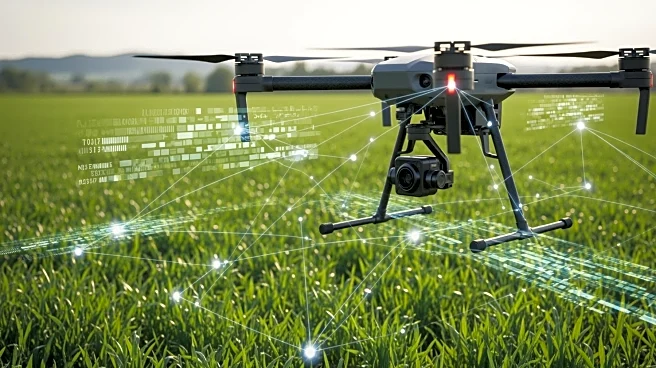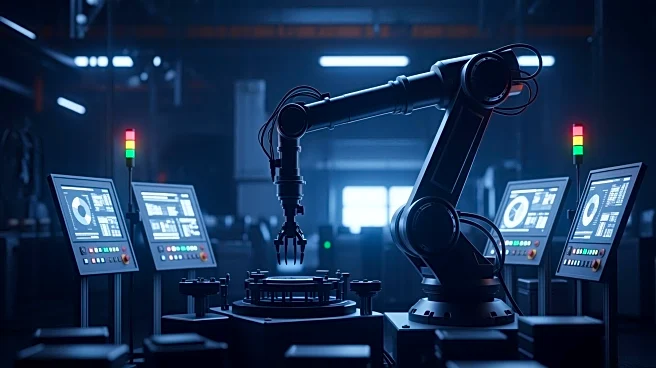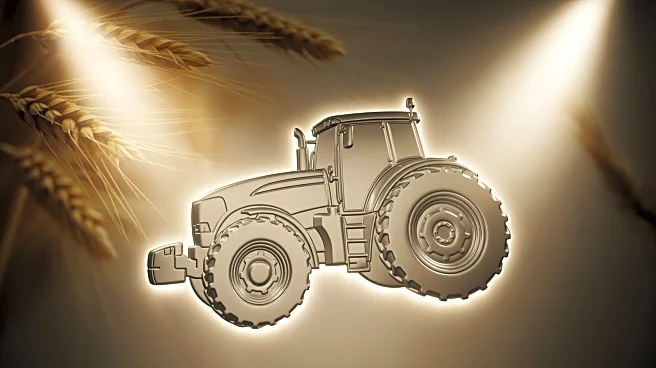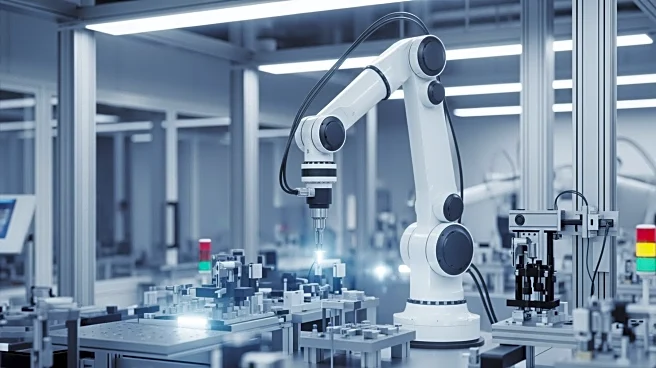What's Happening?
The agricultural robots market is projected to grow significantly, with an estimated value of USD 17.73 billion in 2025, reaching USD 56.26 billion by 2030. This growth is driven by the increasing adoption
of automation and precision farming solutions aimed at improving operational efficiency and addressing labor shortages. Key innovations in AI, machine learning, and IoT-enabled systems are facilitating autonomous planting, harvesting, and real-time crop monitoring. The market is further supported by strategic government initiatives and investments in agri-tech startups, accelerating the deployment of advanced agricultural robotics globally. The outdoor segment, which includes autonomous tractors, harvesters, and drones, is expected to dominate due to its robust performance in varying weather and terrain conditions.
Why It's Important?
The expansion of the agricultural robots market is crucial for addressing ongoing labor shortages and the demand for higher crop yields. By integrating robotic technologies, farmers can enhance productivity, reduce operational costs, and maintain consistent yield quality. The emphasis on sustainable farming practices and optimal resource utilization supports market growth, benefiting both large-scale and small-scale farms. The deployment of advanced robotics in agriculture is expected to improve efficiency, reduce chemical use, and enhance sustainability, which is vital for meeting global food demands and environmental standards.
What's Next?
The agricultural robots market is likely to see further advancements in AI-powered technologies, such as precision sprayers and drones, which will continue to improve farm efficiency and sustainability. Key industry players are expected to launch new products and technologies that enhance precision agriculture practices. Additionally, supportive government policies and investments in smart farming initiatives will likely drive further adoption of agricultural robotics, particularly in regions like Asia Pacific, where labor shortages and technological infrastructure support rapid growth.
Beyond the Headlines
The integration of AI and machine learning in agricultural robotics presents ethical considerations regarding data privacy and the potential displacement of traditional farming jobs. As technology advances, there will be a need for regulatory frameworks to ensure responsible use and equitable access to these innovations. Long-term shifts in agricultural practices may also influence cultural perceptions of farming, as automation becomes more prevalent.











